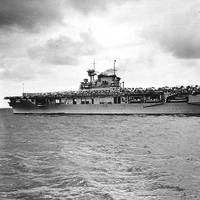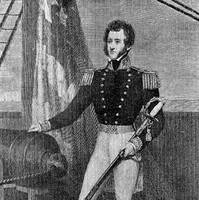This Day In Naval History: August 4

1790 - The Revenue Cutter Service is established by Congress, authorizing the construction of 10 vessels to enforce federal tariff and trade laws and prevent smuggling. The service receives its present name, U.S. Coast Guard, in 1915 under an act of Congress that merges the Revenue Cutter Service with the Life-Saving Service, thereby providing the nation with a single maritime service dedicated to saving life at sea and enforcing the nation's maritime laws. 1846 - During the Mexican-American War…
Today in U.S. Naval History: August 13
Today in U.S. Naval History - August 13 1777 - American explosive device made by David Bushnell explodes near British vessel off New London, CT. 1846 - Joint expedition led by CDR Robert Stockton seizes Los Angeles, CA 1870 - Armed tug Palos becomes first U.S. Navy ship to transit Suez Canal For more information about naval history, visit the Naval History and Heritage Command website at history.navy.mil.
Today in U.S. Naval History: August 13

Today in U.S. Naval History - August 13 1777 - American explosive device made by David Bushnell explodes near British vessel off New London, Conn. 1846 - Joint expedition led by Commodore Robert Stockton seizes Los Angeles, Calif. 1870 - Armed tug Palos becomes first U.S. Navy ship to transit Suez Canal For more information about naval history, visit the Naval History and Heritage Command website at history.navy.mil.
This Day in Naval History – October 19
1843 - CAPT Robert Stockton in Princeton, the first screw propelled naval steamer, challenges British merchant ship Great Western to a race off New York, which Princeton won easily 1915 - Establishment of Submarine Base at New London, Connecticut. 1944 - Secretary of Navy orders African American women accepted into Naval Reserve. 1987 - Destruction of an Iranian oil-drilling platform used for military purposes. (Source: Navy News Service)
This Day in Naval History – August 13
1777 - American explosive device made by David Bushnell explodes near British vessel off New London, CT. 1846 - Joint expedition led by CDR Robert Stockton seizes Los Angeles, CA 1870 - Armed tug Palos becomes first U.S. Navy ship to transit Suez Canal (Source: Navy News Service)
This Day in Naval History – Oct. 19
1843 - CAPT Robert Stockton in Princeton, the first screw propelled naval steamer, challenges British merchant ship Great Western to a race off New York, which Princeton won easily 1915 - Establishment of Submarine Base at New London, Connecticut. 1944 - Secretary of Navy orders African American women accepted into Naval Reserve. 1987 - Destruction of an Iranian oil-drilling platform used for military purposes. (Source: Navy News Service)
This Day in Naval History - Aug. 13
From the Navy News Service 1777 - American explosive device made by David Bushnell explodes near British vessel off New London, Conn. 1846 - Joint expedition led by Cmdr. Robert Stockton seizes Los Angeles, Calif. 1870 - Armed tug Palos becomes first U.S. Navy ship to transit Suez Canal.
This Day in Naval History - Oct. 19
1843 - Capt. Robert Stockton on Princeton, the first screw-propelled naval steamer, challenges British merchant ship Great Western to a race off New York, which Princeton won easily. 1915 - Submarine Base at New London, Conn is established. 1944 - Secretary of the Navy orders African-American women accepted into the Naval Reserve. 1987 - Iranian oil-drilling platform used for military purposes is destroyed. For more information about naval history, visit the Naval Historical Center Web site at www.history.navy.mil.









